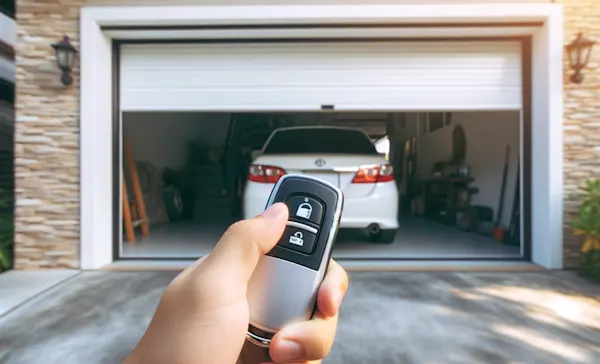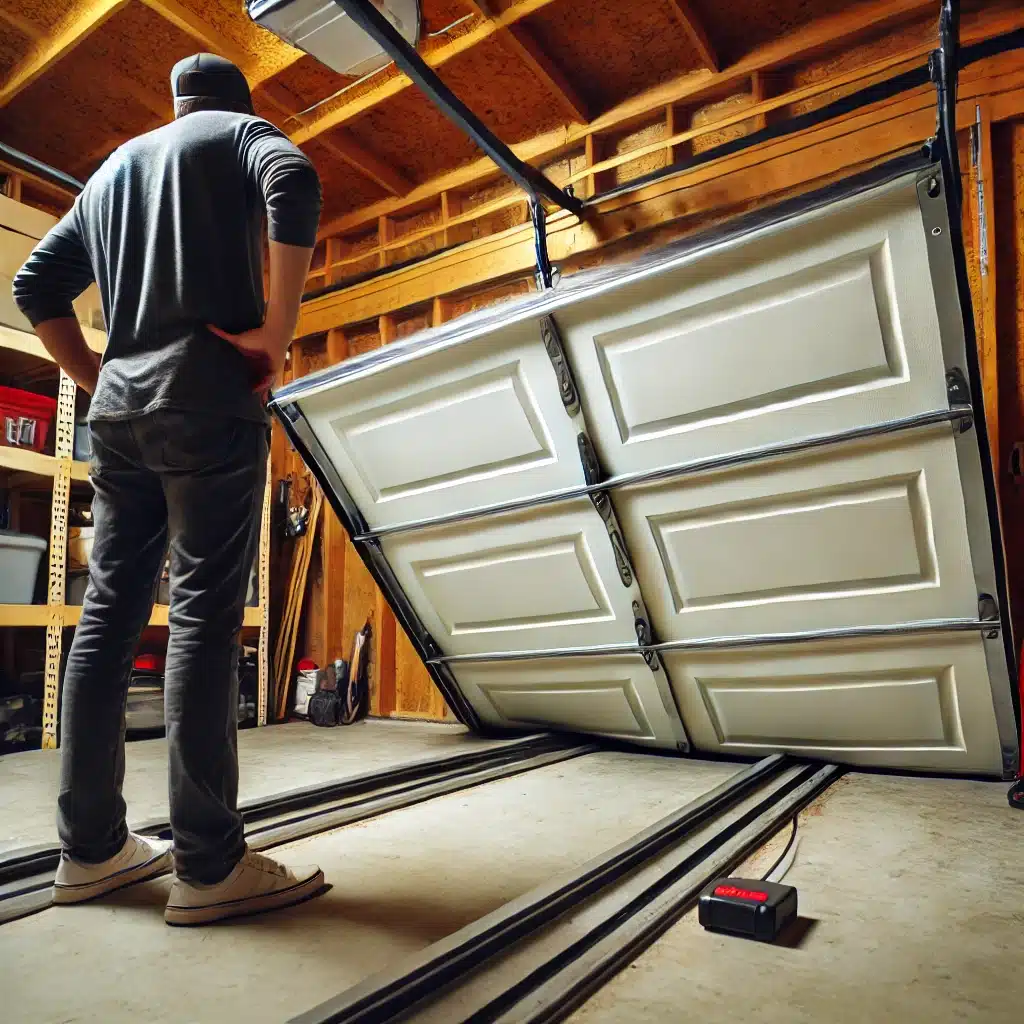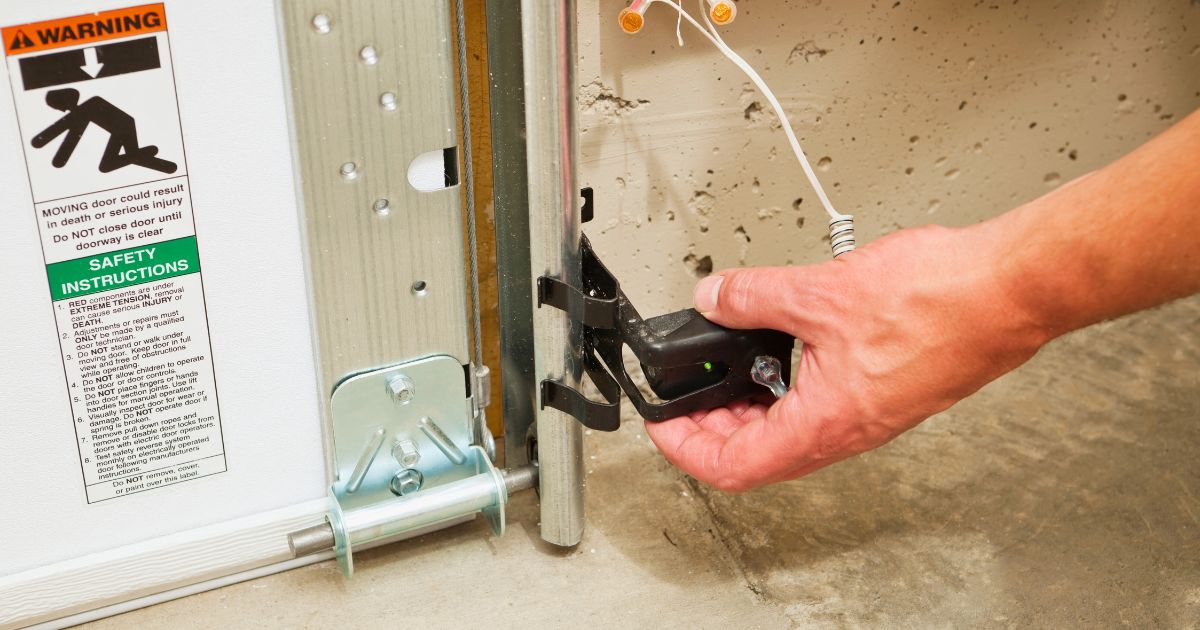As a garage door technician with over a decade of experience, I've encountered countless homeowners puzzled by the yellow sensor light on their garage doors. This warning signal, while frustrating, serves as a crucial safety feature that shouldn't be ignored. In fact, just last week, I helped a neighbor whose garage door refused to close due to a seemingly mysterious yellow light – a problem we resolved in under 15 minutes once we identified the root cause.
Understanding the Yellow Light Warning
The yellow sensor light indicates a problem with your garage door's safety beam system, designed to prevent accidents by stopping the door from closing when objects, pets, or people are in its path. This safety feature, mandatory in all modern garage doors, uses infrared technology to detect obstacles and protect your family and belongings.
Common Causes and Their Solutions
Sensor Misalignment
Weather conditions and accidental bumps can knock sensors out of position, disrupting the safety beam's functionality. These sensors must maintain perfect alignment to communicate effectively. During a recent service call, I discovered that a simple nudge from a bicycle had caused persistent door issues for weeks – a problem solved by basic realignment.

Dirty Sensor Lenses
Over time, sensor lenses accumulate dirt, dust, and cobwebs that can block the infrared beam. Regular cleaning with a microfiber cloth or slightly damp paper towel maintains proper functionality. I've seen sensors covered in everything from spider webs to pollen, all causing the dreaded yellow light.

Wiring Complications
Damaged or frayed wires significantly impact sensor operation. Loose connections or deteriorated wiring often lead to intermittent functionality problems. In harsh weather conditions, wire damage becomes particularly common, requiring careful inspection and occasional replacement.
Troubleshooting Process
Before beginning any repairs, gather essential tools: a step ladder, pliers, work gloves, wire cutters, safety glasses, screwdrivers, and a level. Always disconnect power to the garage door opener before starting work.
Initial Assessment
Start by examining the sensor area for obvious obstructions or debris. Check both sensor lenses for dirt accumulation and inspect visible wiring for damage. Often, the solution is as simple as removing a fallen leaf or cleaning a dusty lens.
Alignment Correction
If cleaning doesn't resolve the issue, check sensor alignment. Loosen the brackets and adjust the sensors until they point directly at each other. Use a level to ensure both sensors sit at the same height. The yellow light should turn green once proper alignment is achieved.
Wiring Inspection
Examine all visible wiring for signs of wear or damage. Secure any loose connections and replace frayed wires if necessary. In areas prone to moisture or extreme temperatures, consider adding protective covering to prevent future wire damage.

Environmental Considerations
Weather plays a significant role in sensor functionality. Extreme temperatures can affect electronic components, while high humidity might cause internal condensation. Direct sunlight can interfere with sensor operation, and UV exposure may degrade components over time. Installing weather seals or UV shields in vulnerable areas helps protect your system.
Maintenance for Prevention
Regular maintenance prevents most sensor issues. Schedule monthly lens cleaning, quarterly environment checks, and seasonal alignment verification. Consider professional inspections annually, especially if your system is older or experiences frequent problems.
When to Replace Instead of Repair
Sometimes replacement becomes necessary. Consider this option when sensors show physical damage, LED lights continue flashing after multiple alignment attempts, or your system is more than a decade old. Repeated repairs without lasting results often indicate the need for replacement.
Through years of experience, I've learned that most garage door sensor issues can be resolved through careful troubleshooting and maintenance. However, safety should always be your primary concern. If you're ever unsure about a repair, don't hesitate to contact a professional. Your garage door's safety features protect what matters most – addressing that yellow light promptly ensures they continue doing their job effectively.
Remember, regular maintenance and quick attention to warning signals will keep your garage door operating safely and efficiently for years to come. By following these guidelines and staying attentive to your system's needs, you can maintain a properly functioning garage door that provides both convenience and security for your home.

